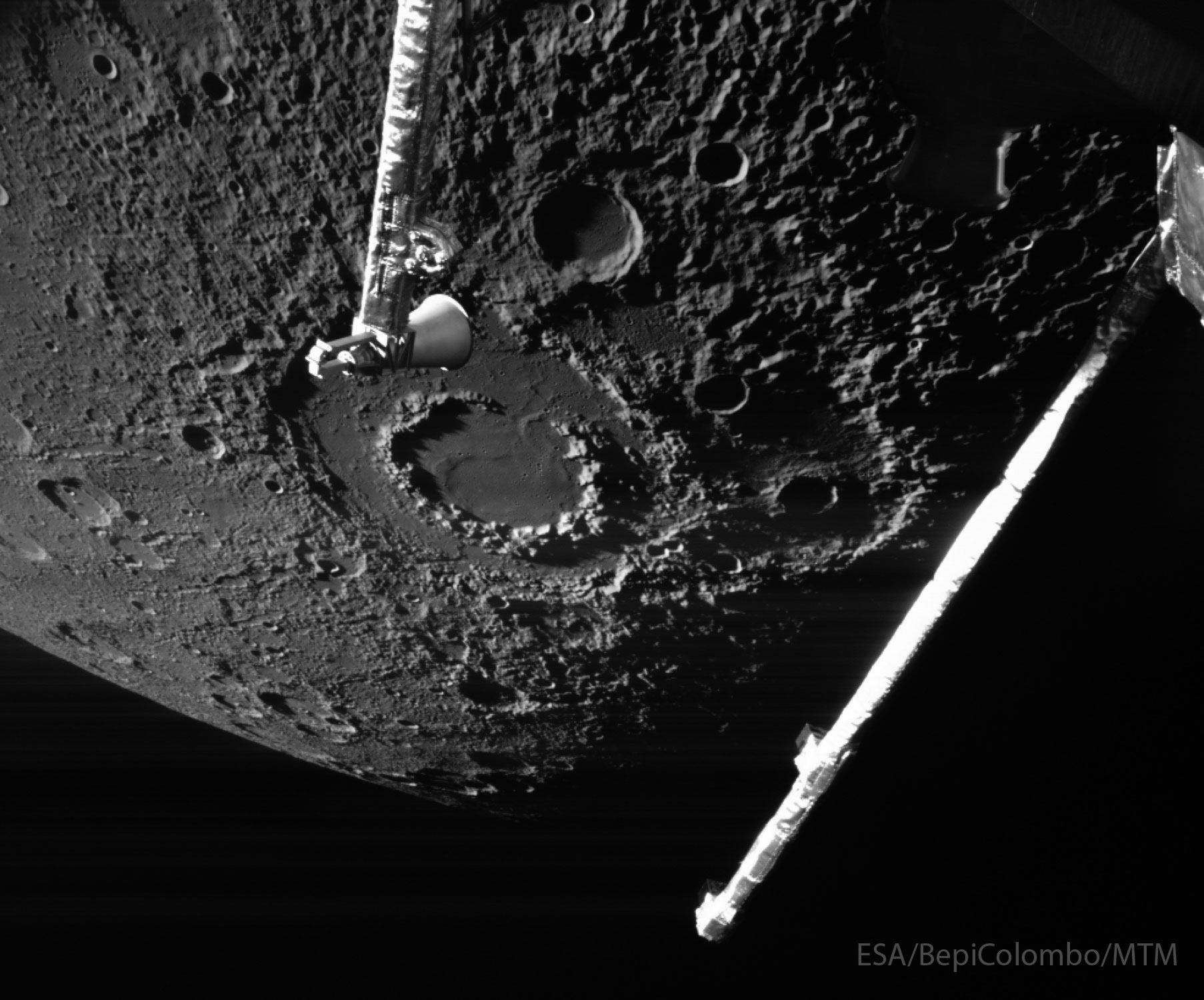APOD on Nostr: **Astronomy Picture of the Day** 16 September 2024 **Mercury's Vivaldi Crater from ...
**Astronomy Picture of the Day**
16 September 2024
**Mercury's Vivaldi Crater from BepiColombo**

*Image creditor details unavailable via API. Visit linked page below for full info.*
Why does this large crater on Mercury have two rings and a smooth floor? No one is sure. The unusual feature called Vivaldi Crater spans 215 kilometers and was imaged again in great detail by ESA's and JAXA's robotic BepiColombo spacecraft on a flyby earlier this month. A large circular feature on a rocky planet or moon is usually caused by either an impact by a small asteroid or a comet fragment, or a volcanic eruption. In the case of Vivaldi, it is possible that both occurred -- a heavy strike that caused a smooth internal lava flow. Double-ringed craters are rare, and the cause of the inner rings remains a topic of research. The speed-slowing gravity-assisted flyby of Mercury by BepiColombo was in preparation for the spacecraft entering orbit around the Solar System's innermost planet in 2026.
#APOD #Astrogeology #Galactic #Universe #SpaceStation
https://apod.nasa.gov/apod/ap240916.html
16 September 2024
**Mercury's Vivaldi Crater from BepiColombo**

*Image creditor details unavailable via API. Visit linked page below for full info.*
Why does this large crater on Mercury have two rings and a smooth floor? No one is sure. The unusual feature called Vivaldi Crater spans 215 kilometers and was imaged again in great detail by ESA's and JAXA's robotic BepiColombo spacecraft on a flyby earlier this month. A large circular feature on a rocky planet or moon is usually caused by either an impact by a small asteroid or a comet fragment, or a volcanic eruption. In the case of Vivaldi, it is possible that both occurred -- a heavy strike that caused a smooth internal lava flow. Double-ringed craters are rare, and the cause of the inner rings remains a topic of research. The speed-slowing gravity-assisted flyby of Mercury by BepiColombo was in preparation for the spacecraft entering orbit around the Solar System's innermost planet in 2026.
#APOD #Astrogeology #Galactic #Universe #SpaceStation
https://apod.nasa.gov/apod/ap240916.html
